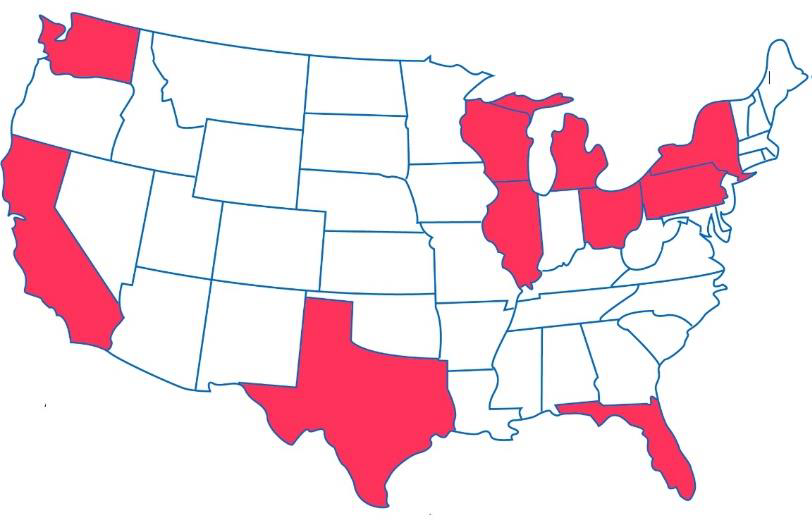
This past December I wrote about School Safety and the anxiety we feel when we turn on the news. Regrettably, not only did the tragic Florida school shooting occur in February, but as of this blog post, there have been 28 school shootings[1] since January 1 of this year.
Districts across the state continue the difficult and complex work of trying to find solutions, utilizing threat assessment systems and coordinating inter-disciplinary teams to identify and assess risks and provide interventions. It is a time-consuming and costly process. Many smaller districts struggle financially just trying to fulfill the many needs of their students while maintaining a balanced budget.
As our teachers stand on the front lines of classroom struggles, they are required to wear many hats. Not only must they educate, they must oftentimes step into the roles ofparent, adviser, mental health counselor, protector and more. Teachers work hard to adapt to the latest state rules and requirements, reach markers, achieve testing standards, balance the needs of their individual students and maintain regular communication with parents and guardians. To say teaching is a difficult job would be an understatement, and these days, it can also be dangerous.
We know that exposure to school violence can affect student achievement up to three years after an incident, showing marked reductions in test scores.[2] “Our estimates indicate that students, on average, are highly affected when there is a homicidal shooting. These results indicate that policymakers should consider preventive measures such as gun control, and more resources should be made available to students.”[3] However, it is not just students that are affected; teachers, staff,and administrators may become withdrawn, depressed or develop post-traumatic stress disorder (PTSD). While statewide efforts to develop robust, whole-school approaches that address the mental health and well-being of students are increasing, systems that will support the emotional well-being of school staff should be considered as well.
As Washington State has become more aggressive in implementing Threat Assessment systems, more and more districts are collaborating and working with community health, mental health and social service agencies to provide resources and address student behavioral and mental health needs. Networks and teams are being created to identify and assess risk and/or trauma and address student challenges early on, providing multi-tiered support, helping students to build trust and gain resiliency skillswhile creating a safer learning environment and reducing threat and risk factors.
It is encouraging to know that, in Washington State alone, more than 26,000 people have been trained in Mental Health First Aid, and across the country – more than one million[4]. We know mental health support is a key element to ensuring the health and well-being of our students as well as being instrumental in the violence prevention process.
“There is a significant increase in the number of actual incidents of violence. When compared to the same time-period last year, schools have experienced a 59% increase in violent incidents.”[6]
Fall 2016
Threats 878
Incidents 64
Fall 2017
Threats 961 (9.5% increase)
Incidents 100 (59% increase)
“While violent incidents or threats have occurred in 48 of the 50 states so far this school year, 10 states accounted for 48% of all the threats and incidents that have occurred so far. Twenty states account for more than 70% of all threats and incidents. In the ‘top 10’ states of concern, the number of threats and/or incidents is statistically significant for a number of reasons. These include the sheer number of incidents or threats,the type of events that occurred, and the total of events or incidents per capita when compared to the population of the state.”[7]

On the positive side, awareness is increasing and momentum growing – even students are rising up to make their voices heard, wanting to be a part of the solution. Teachers, staff, administrators, prevention and threat assessment teams, behavioral and mental health and social welfare agencies are all working toward understanding youth trauma, reducing risks and threats, connecting, and creating strong, supportive relationships with our students. There are a multitude of tools available to districts. With a long-term commitment to developing an inclusive, effective system that all districts can utilize, we can greatly reduce and prevent the threat of violence, and create nurturing, safe learning environments for our students.
NWESD’s Behavioral Health and Prevention Services (BHPS) department is offering two training dates for “Assessing Student Threats in the School,” presented by Salem-Keizer’s John Van Dreal. Additionally, BHPS will be providing further threat assessment trainings, both Level 1 and Level 2, as well as developing safety co-operative opportunities and planning next year’s list of professional development on school safety, focusing on multi-disciplinary and whole-school approaches.
If you have questions about upcoming courses and trainings,please contact Jodie DesBiens, director of BHPS, at 425-879-8810, or at jdesbiens@nwesd.org.
– Ed
[2] https://everytownresearch.org/documents/2015/10/effect-high-school-shootings-schools-student-performance.pdf
[3] https://everytownresearch.org/documents/2015/10/effect-high-school-shootings-schools-student-performance.pdf
[4] https://www.mentalhealthfirstaid.org/algee-ometer
[5] http://www.pewresearch.org/fact-tank/2017/06/22/key-takeaways-on-americans-views-of-guns-and-gun-ownership/


